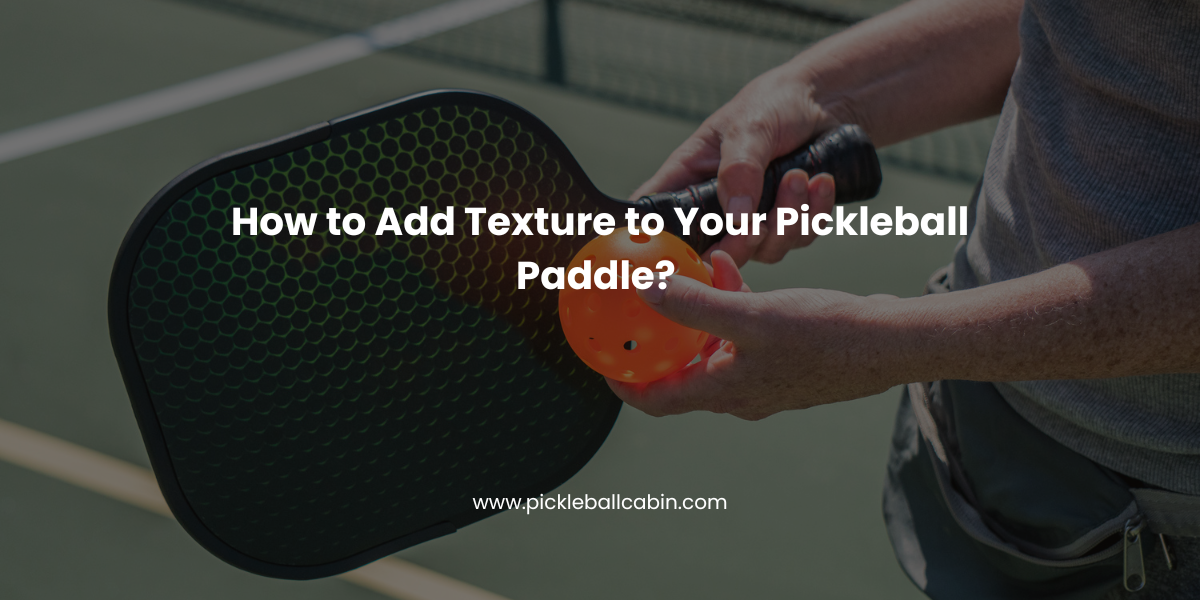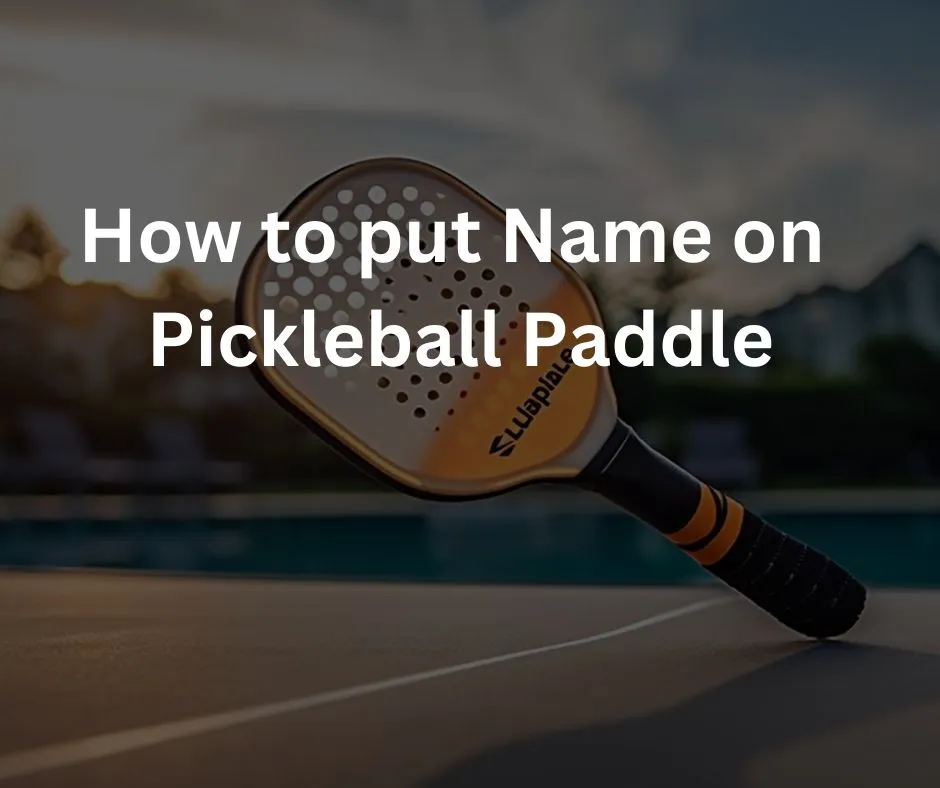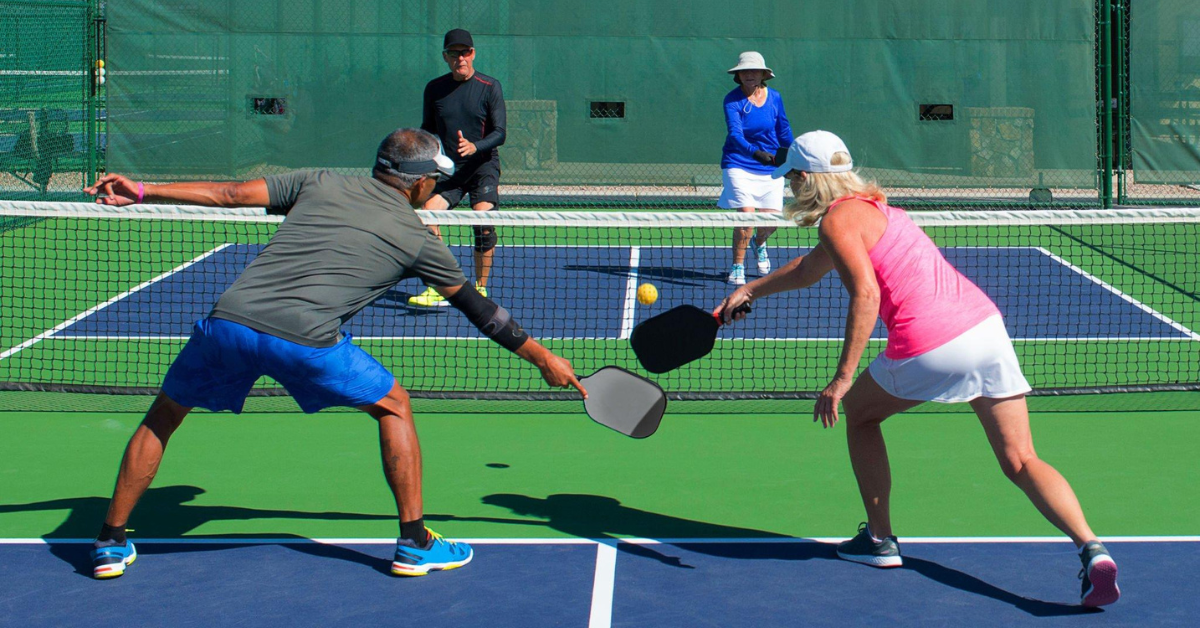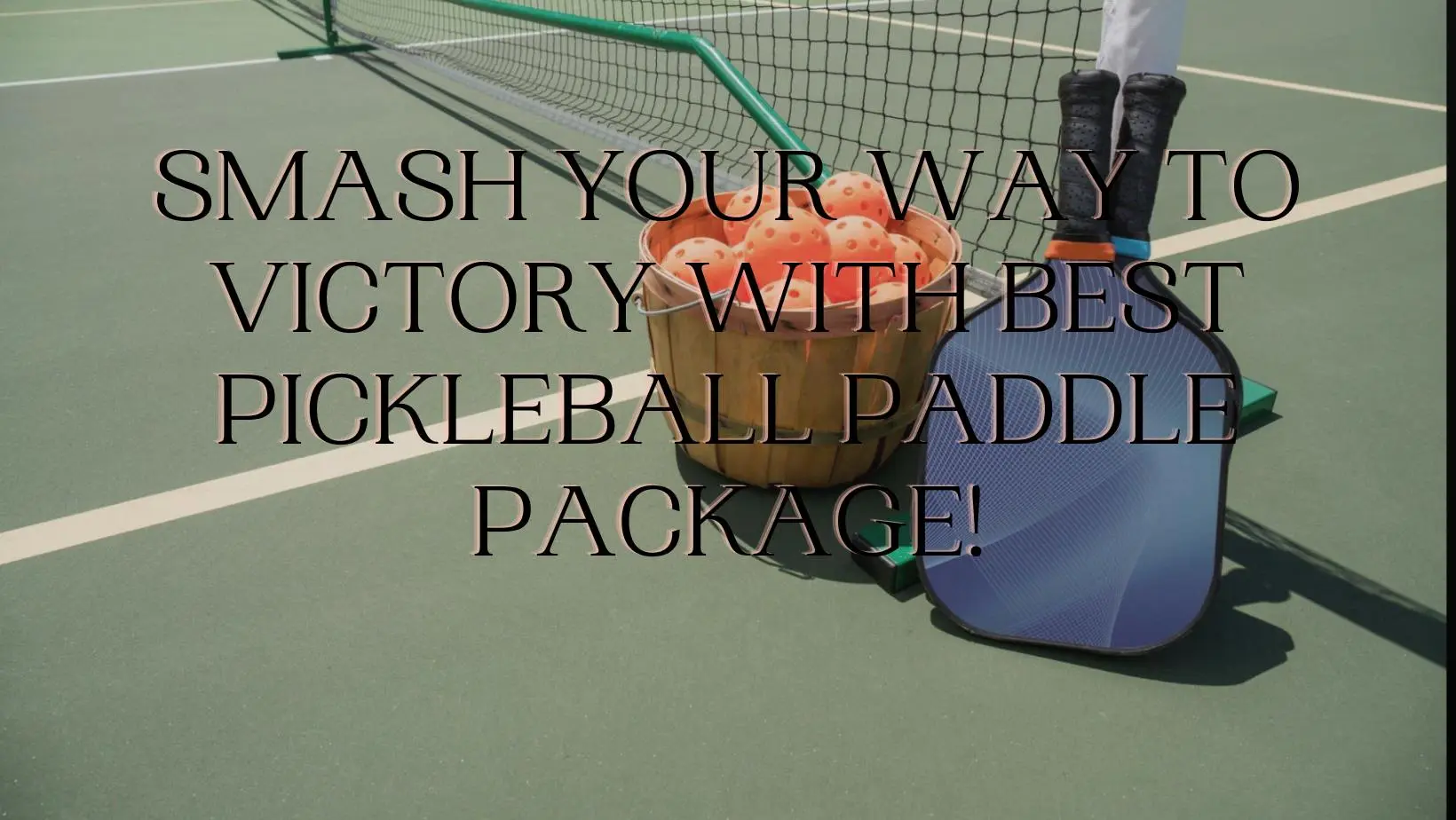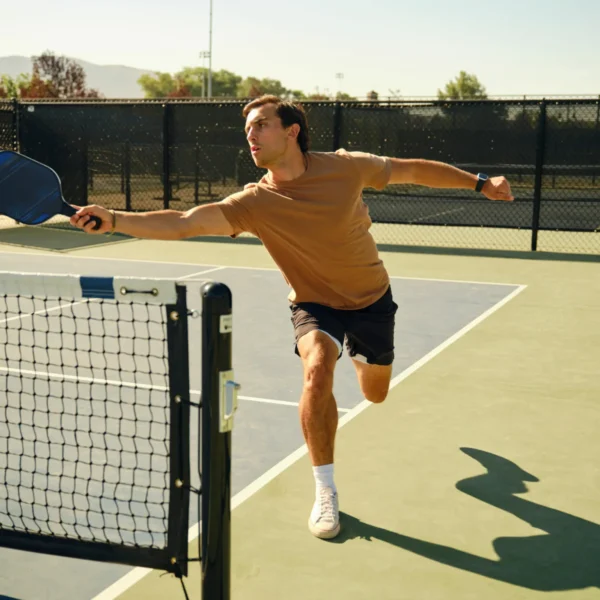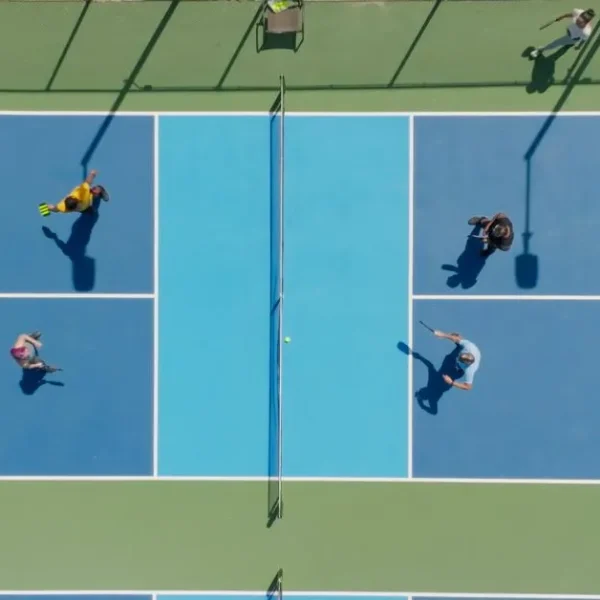Pickleball Strategy for Intermediate Players
If you are an intermediate player who wants to improve your pickleball skills and take your game to the next level, this article is for you. In this article, we will discuss some of the best pickleball strategies for intermediate players, covering key techniques, serving and returns, doubles strategies, advanced techniques, and common mistakes to avoid. By applying these strategies, you will be able to play smarter, faster, and more confidently on the pickleball court.
Mastering Key Techniques
One of the first steps to becoming a better pickleball player is to master some of the key techniques that are essential for the game. Here are some tips to help you improve your technique and gain an edge over your opponents.
Tip #1: Go Deep
One of the most effective ways to put pressure on your opponents is to hit deep shots. By hitting deep shots, you can push your opponents back to the baseline, limit their options, and create openings for yourself. Deep shots also make it harder for your opponents to hit aggressive shots, such as smashes or volleys, and force them to hit defensive shots, such as lobs or dinks.
To hit deep shots, you need to have good control over your paddle angle, ball trajectory, and swing speed. You also need to aim for the back third of the court, preferably near the corners or the sidelines. Avoid hitting too high or too low, as this can result in out-of-bounds shots or easy returns for your opponents.
Tip #2: Be Active
Another important technique to master is to be active on the court. This means that you should always be ready to move, anticipate, and react to the ball. Being active can help you influence the game and gain an advantage over your opponents.
To be active on the court, you need to have good footwork, balance, and positioning. You also need to have a positive and proactive mindset, rather than a passive and reactive one. Some of the ways to be active on the court are:
- Stay on your toes and keep your knees bent.
- Move towards the ball and hit it in front of your body.
- Adjust your position according to the ball and your opponent.
- Keep your paddle up and in front of you.
- Look for opportunities to attack or defend.
Tip #3: Ball Tracking
Another key technique to master is ball tracking. Ball tracking is the ability to follow the ball’s movement with your eyes and your paddle. Ball tracking can help you improve your decision-making, timing, and accuracy on the court.
To improve your ball tracking, you need to focus on the ball and not on your opponent. You also need to watch the ball from the moment it leaves your opponent’s paddle until it reaches your paddle. Some of the benefits of ball tracking are:
- You can see the ball’s speed, spin, and direction.
- You can adjust your paddle angle, swing, and footwork accordingly.
- You can hit the ball at the optimal point of contact.
- You can place the ball where you want it to go.
Tip #4: Go for the Legs
A smart strategy to use in pickleball is to go for your opponent’s legs. By targeting your opponent’s legs, you can make it difficult for them to hit the ball and move around the court. Going for the legs can also disrupt your opponent’s balance, positioning, and rhythm.
To go for the legs, you need to hit low and hard shots that bounce near your opponent’s feet. You can use a variety of shots to achieve this, such as drives, volleys, or drop shots. Some of the techniques to go for the legs are:
- Aim for the space between your opponent’s legs or the outside of their feet.
- Hit the ball with a flat or downward angle.
- Hit the ball with enough power and depth to prevent your opponent from reaching it.
- Mix up your shots to keep your opponent guessing.
Tip #5: When You Go for the Legs, Also Go for the Backhand
A clever way to combine tip #4 and tip #5 is to go for your opponent’s legs and backhand at the same time. By doing this, you can force your opponent to hit a difficult backhand shot from a low and awkward position. This can result in weak or unforced errors from your opponent, or open up the court for you to hit a winning shot.
To go for the legs and backhand, you need to hit the ball to your opponent’s backhand side, preferably near the sideline or the corner. You also need to hit the ball low and hard, so that it bounces near your opponent’s feet. Some of the benefits of going for the legs and backhand are:
- You can exploit your opponent’s weaker side and make them uncomfortable.
- You can reduce your opponent’s options and angles.
- You can create opportunities for yourself to hit forehand shots or volleys.
Serving and Returns
Another aspect of pickleball strategy that you need to master is serving and returns. Serving and returns are the first shots of every rally, and they can set the tone and pace of the game. By having a good serve and return, you can gain an advantage over your opponent and put them on the defensive.
Master Backhand Shots (and Force Them)
One of the ways to improve your serve and return is to master your backhand shots. Backhand shots are often considered weaker and less accurate than forehand shots, but they can also be powerful and effective if executed well. By mastering your backhand shots, you can increase your range of shots and surprise your opponent.
To master your backhand shots, you need to practice your technique, timing, and placement. You also need to use your body rotation, wrist snap, and paddle angle to generate power and spin. Some of the drills to master your backhand shots are:
- Hit backhand drives from the baseline to the baseline.
- Hit backhand volleys from the non-volley zone to the non-volley zone.
- Hit backhand drop shots from the baseline to the non-volley zone.
- Hit backhand dinks from the non-volley zone to the non-volley zone.
Another way to improve your serve and return is to force your opponent to hit backhand shots. By doing this, you can exploit your opponent’s weaker side and make them hit difficult or error-prone shots. You can also anticipate and prepare for their shots more easily.
To force your opponent to hit backhand shots, you need to aim for their backhand side, preferably near the sideline or the corner. You also need to hit the ball with enough power and depth to prevent your opponent from switching to their forehand. Some of the benefits of forcing your opponent to hit backhand shots are:
- You can put pressure on your opponent and make them uncomfortable.
- You can reduce your opponent’s options and angles.
- You can create opportunities for yourself to hit forehand shots or volleys.
Concentrate on Shots Before Hitting Them
Another way to improve your serve and return is to concentrate on your shots before hitting them. This means that you should analyze the situation and plan your shot before you swing your paddle. By concentrating on your shots, you can improve your accuracy, consistency, and decision-making on the court.
To concentrate on your shots, you need to pay attention to the following factors:
- The ball’s speed, spin, and direction.
- Your opponent’s position, movement, and reaction.
- Your position, balance, and footwork.
- Your paddle angle, swing, and point of contact.
- Your shot’s power, depth, and placement.
By considering these factors, you can choose the best shot for the situation and execute it with confidence. Some of the benefits of concentrating on your shots are:
- You can hit the ball where you want it to go.
- You can avoid hitting out-of-bounds or into the net.
- You can avoid hitting predictable or easy shots for your opponent.
- You can hit shots that put pressure on your opponent or create openings for yourself.
Deliver Deep Serves and Serve Returns
Another way to improve your serve and return is to deliver deep serves and serve returns. By delivering deep serves and serve returns, you can push your opponent back to the baseline, limit their options, and create openings for yourself. Deep serves and serve returns also make it harder for your opponent to hit aggressive shots, such as smashes or volleys, and force them to hit defensive shots, such as lobs or dinks.
To deliver deep serves and serve returns, you need to have good control over your paddle angle, ball trajectory, and swing speed. You also need to aim for the back third of the court, preferably near the corners or the sidelines. Avoid hitting too high or too low, as this can result in out-of-bounds shots or easy returns for your opponent.
Some of the techniques to deliver deep serves and serve returns are:
- Use a smooth and consistent swing motion.
- Hit the ball with a flat or downward angle.
- Hit the ball with enough power and depth to prevent your opponent from reaching it.
- Mix up your serves and returns to keep your opponent guessing.
Doubles Strategies
Another aspect of pickleball strategy that you need to master is doubles strategies. Doubles is the most common and popular format of pickleball, and it requires teamwork, communication, and coordination between partners. By having a good doubles strategy, you can maximize your strengths, minimize your weaknesses, and outsmart your opponents.
Doubles Strategies
Another aspect of pickleball strategy that you need to master is doubles strategies. Doubles is the most common and popular format of pickleball, and it requires teamwork, communication, and coordination between partners. By having a good doubles strategy, you can maximize your strengths, minimize your weaknesses, and outsmart your opponents.
Here are some of the best doubles strategies for intermediate players, covering how to hit to the weaker opponent, return serves down the middle, practice good teamwork, and strategically place the stronger player.
Hit to the Weaker Opponent in Doubles
One of the smartest ways to win in doubles is to hit to the weaker opponent. By doing this, you can exploit the weaknesses of the opponent, create unforced errors, and gain points. Hitting to the weaker opponent can also reduce the confidence and morale of the opponent, and increase the frustration and tension between the partners.
To hit to the weaker opponent, you need to identify who is the weaker opponent, and what are their weaknesses. You can do this by observing their shots, movements, and reactions during the warm-up and the game. Some of the common weaknesses of pickleball players are:
- Poor backhand or forehand shots.
- Slow or limited footwork.
- Weak or inconsistent serve or return.
- Lack of confidence or aggressiveness.
- Poor communication or coordination with partner.
Once you have identified the weaker opponent and their weaknesses, you need to target them with your shots. You can use a variety of shots to achieve this, such as drives, volleys, drop shots, or dinks. Some of the strategies to hit to the weaker opponent are:
- Aim for their weaker side, preferably near the sideline or the corner.
- Hit the ball low and hard, so that they have to bend down or reach out.
- Hit the ball with spin or angle, so that they have to adjust their paddle or footwork.
- Mix up your shots to keep them guessing and off-balance.
Return Serves Down the Middle
Another effective way to win in doubles is to return serves down the middle. By doing this, you can create confusion and hesitation between the opponents, and force them to hit weak or error-prone shots. Returning serves down the middle can also prevent the opponents from hitting aggressive shots, such as smashes or volleys, and force them to hit defensive shots, such as lobs or dinks.
To return serves down the middle, you need to have good control over your paddle angle, ball trajectory, and swing speed. You also need to aim for the middle of the court, preferably near the centerline or the non-volley zone line. Avoid hitting too high or too low, as this can result in out-of-bounds shots or easy returns for the opponents.
Some of the benefits of returning serves down the middle are:
- You can create uncertainty and indecision between the opponents, and make them collide or miss the ball.
- You can reduce the opponents’ options and angles, and make them hit backhand shots or cross-court shots.
- You can create opportunities for yourself and your partner to hit forehand shots or volleys.
Practice Good Teamwork
Another essential way to win in doubles is to practice good teamwork. Teamwork is the key to success in doubles, as it allows you and your partner to work together, support each other, and complement each other. By practicing good teamwork, you can improve your performance, confidence, and enjoyment on the court.
To practice good teamwork, you need to communicate, coordinate, and cooperate with your partner. You also need to have a positive and respectful attitude, and a common goal and strategy. Some of the ways to practice good teamwork are:
- Communicate with your partner before, during, and after the game. Use verbal and non-verbal cues, such as words, gestures, or eye contact, to share information, instructions, or encouragement.
- Coordinate with your partner on the court. Use signals, such as hand gestures or paddle taps, to indicate your intentions, such as serving, switching, or attacking. Move in sync with your partner, and cover each other’s gaps or weaknesses.
- Cooperate with your partner on the court. Share the responsibilities, such as serving, returning, or volleying. Support your partner, such as backing them up, setting them up, or cheering them up. Complement your partner, such as matching their style, pace, or level.
Strategically Place the Stronger Player in Doubles Matches
Another clever way to win in doubles is to strategically place the stronger player in doubles matches. By doing this, you can maximize the strengths of your team, and minimize the weaknesses of your team. Strategically placing the stronger player can also help you counter the opponents’ strategies, and create advantages for your team.
To strategically place the stronger player, you need to identify who is the stronger player, and what are their strengths. You can do this by evaluating your skills, shots, and preferences, as well as your partner’s. Some of the common strengths of pickleball players are:
- Powerful or accurate forehand or backhand shots.
- Fast or agile footwork.
- Strong or consistent serve or return.
- High confidence or aggressiveness.
- Good communication or coordination with partner.
Once you have identified the stronger player and their strengths, you need to position them on the court according to the situation. You can use different criteria to decide the best position for the stronger player, such as:
- The serve or return. The stronger player should serve or return first, as this can give your team an early lead or advantage. The stronger player should also serve or return from the right side of the court, as this can allow them to hit more forehand shots or volleys.
- The opponents’ strategy. The stronger player should counter the opponents’ strategy, such as hitting to the weaker opponent, returning serves down the middle, or attacking the net. The stronger player should also adapt to the opponents’ style, pace, or level.
- The personal preference. The stronger player should play in the position that they feel most comfortable and confident in, such as the forehand or backhand side, the baseline or the net, or the left or right side of the court.
Mastering Advanced Techniques
Another aspect of pickleball strategy that you need to master is advanced techniques. Advanced techniques are the skills and shots that can give you an edge over your opponents, and help you win more points and games. By mastering advanced techniques, you can enhance your pickleball abilities and impress your opponents.
One of the most important advanced techniques to master is the dink shot. The dink shot is a soft and low shot that lands in the opponent’s non-volley zone, and forces them to hit a difficult or defensive shot. The dink shot is a valuable technique that can help you control the rally, create openings, and win points.
To master the dink shot, you need to practice your technique, timing, and placement. You also need to use your paddle angle, wrist action, and touch to generate the right amount of power and spin. Some of the techniques to master the dink shot are:
- Use a short and smooth swing motion.
- Hit the ball with a slightly open paddle angle.
- Hit the ball with a slight upward or downward motion.
- Hit the ball with a soft or firm touch, depending on the situation.
- Aim for the opponent’s feet or the non-volley zone line.
Avoiding Common Mistakes
Another aspect of pickleball strategy that you need to master is avoiding common mistakes. Common mistakes are the errors and blunders that can cost you points and games, and frustrate you and your partner. By avoiding common mistakes, you can improve your pickleball performance, consistency, and enjoyment on the court.
Here are some of the common pickleball mistakes made by intermediate players, and how to avoid them.
Improve Your Footwork
One of the common mistakes made by intermediate players is poor footwork. Poor footwork is the lack of movement, balance, or positioning on the court. Poor footwork can result in missing or mishitting the ball, hitting out-of-bounds or into the net, or losing the rally.
To avoid poor footwork, you need to practice your footwork, and improve your agility, speed, and coordination. You also need to use the correct footwork patterns, such as the shuffle, the crossover, or the pivot. Some of the ways to avoid poor footwork are:
- Stay on your toes and keep your knees bent.
- Move towards the ball and hit it in front of your body.
- Adjust your position according to the ball and your opponent.
- Keep your feet shoulder-width apart and your weight evenly distributed.
- Use small and quick steps to move around the court.
Track the Ball with Your Paddle
Another common mistake made by intermediate players is not tracking the ball with your paddle. Not tracking the ball with your paddle is the lack of following the ball’s movement with your eyes and your paddle. Not tracking the ball with your paddle can result in losing sight or control of the ball, hitting the wrong or weak shot, or hitting out-of-bounds or into the net.
To avoid not tracking the ball with your paddle, you need to focus on the ball and not on your opponent. You also need to watch the ball from the moment it leaves your opponent’s paddle until it reaches your paddle. Some of the ways to avoid not tracking the ball with your paddle are:
- Keep your head still and your eyes on the ball.
- Keep your paddle up and in front of you.
- Move your paddle with the ball and adjust your paddle angle accordingly.
- Hit the ball at the optimal point of contact.
- Place the ball where you want it to go.
Practice Your Serve Consistently
Another common mistake made by intermediate players is not practicing your serve consistently. Not practicing your serve consistently is the lack of working on your serve technique, accuracy, and variety. Not practicing your serve consistently can result in weak or inconsistent serves, easy returns for your opponent, or loss of points or games.
To avoid not practicing your serve consistently, you need to practice your serve regularly, and improve your power, depth, and spin. You also need to use different types of serves, such as the flat serve, the topspin serve, or the slice serve. Some of the ways to avoid not practicing your serve consistently are:
- Use a smooth and consistent swing motion.
- Hit the ball with a flat or downward angle.
- Hit the ball with enough power and depth to prevent your opponent from reaching it.
- Mix up your serves to keep your opponent guessing and off-balance.
Believe in Rest and Recovery
Another common mistake made by intermediate players is not believing in rest and recovery. Not believing in rest and recovery is the lack of taking breaks, resting, or recovering from pickleball. Not believing in rest and recovery can result in fatigue, injury, or burnout, and affect your pickleball performance, health, and enjoyment.
To avoid not believing in rest and recovery, you need to take care of your body and mind, and listen to your signals. You also need to follow a balanced and healthy lifestyle, and incorporate rest and recovery into your pickleball routine. Some of the ways to avoid not believing in rest and recovery are:
- Take breaks between games, sets, or matches.
- Drink water and eat snacks to stay hydrated and energized.
- Stretch and warm up before and after playing.
- Ice and massage your muscles and joints to reduce inflammation and pain.
- Sleep and relax to restore your energy and mood.
Know Where You’re Hitting Before You Hit It
Another common mistake made by intermediate players is not knowing where you’re hitting before you hit it. Not knowing where you’re hitting before you hit it is the lack of planning or aiming your shots before you swing your paddle. Not knowing where you’re hitting before you hit it can result in hitting out-of-bounds or into the net, hitting predictable or easy shots for your opponent, or losing the rally.
To avoid not knowing where you’re hitting before you hit it, you need to concentrate on your shots, and analyze the situation before you hit the ball. You also need to have a clear and realistic target, and execute your shot with confidence. Some of the ways to avoid not knowing where you’re hitting before you hit it are:
- Look at the court and your opponent before you hit the ball.
- Choose the best shot for the situation and your skill level.
- Aim for the target and hit the ball with the appropriate power, depth, and placement.
- Follow through with your swing and watch the ball until it lands.
Conclusion
Pickleball is a game of strategy, and by mastering some of the best pickleball strategies for intermediate players, you can improve your pickleball skills and take your game to the next level. In this article, we have discussed some of the key techniques, serving and returns, doubles strategies, advanced techniques, and common mistakes to avoid in pickleball. By applying these strategies, you will be able to play smarter, faster, and more confidently on the pickleball court.
We hope you have enjoyed this article and learned something new and useful. If you have any questions, comments, or feedback, please feel free to share them with us. We would love to hear from you and help you with your pickleball journey.
